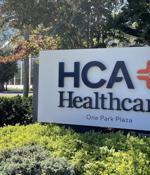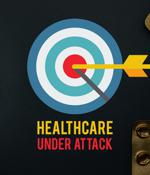Security News

HCA Healthcare disclosed a data breach impacting an estimated 11 million patients who received care at one of its hospitals and clinics after a threat actor leaked samples of the stolen data on a hacking forum.As first reported by DataBreaches.net, on July 5th, 2023, a threat actor began selling data allegedly belonging to HCA Healthcare on a forum used to sell and leak stolen data.

Healthcare continues to be one of the most attractive targets for cyberattackers, and the number of breaches affecting the industry is increasing yearly. In this Help Net Security video, Steve Gwizdala, VP of Healthcare at ForgeRock, discusses how vigilance and new ways of enhancing cybersecurity measures will be crucial to healthcare organizations and businesses responsible for protecting consumers' online information - across the entire supply chain.

In this Help Net Security interview, Brett Harris, Cybersecurity Officer for the Americas at Siemens Healthineers, discusses the long-term impacts of cyberattacks on healthcare institutions and what healthcare providers can do to protect patients' personal data and medical devices. Could you elaborate on the long-term impacts of significant cyberattacks on healthcare institutions?

In this Help Net Security interview, Ken Briggs, General Counsel at Salucro, discusses how fostering a culture of security awareness has become paramount for healthcare organizations. Considering the recent trends in cybersecurity, such as the rise of cloud computing and remote work, what considerations should healthcare organizations keep in mind to maintain a strong security posture? How can they balance convenience and accessibility with the need for robust security measures?

"Based on the investigation, it was determined that information potentially accessed in the incident varied for each individual and may have included personal, medical, health insurance or financial information, and in some limited cases, Social Security numbers," according to a notice on Apria's website. The healthcare biz also provided more details about what happened in a data security breach notification letter sent to 1,869,598 people.

As digital transformation revolutionizes the healthcare industry, its use of API technology is skyrocketing. APIs, which help users and apps interact and exchange information, are essential tools for healthcare systems striving to achieve greater interoperability.

Volumes are increasing rapidly, and so is the complexity of the digital storage facilities: healthcare providers today house patient information on multiple data platforms such as on-premises servers, electronic health record systems and public/private cloud services. What's more, modern healthcare environments also span sophisticated medical systems and Internet of Things devices that are interconnected with each other and, in some cases, externally to the internet.

This article will outline some of the ways CISOs in the healthcare sector can automate cloud security controls and integrate those controls into standard deployment cycles. There are many cloud security frameworks and best practices.

Independent Living Systems, a Miami-based healthcare administration and managed care solutions provider, suffered a data breach that exposed the personal information of 4,226,508 individuals. The number of impacted individuals makes this the largest data breach in the healthcare sector disclosed this year.

Investing in digital identity can improve security, increase clinical productivity, and boost healthcare's bottom line. From a clinical perspective, digital identity makes accessing technology completely transparent - invisible even.